Am I doing enough for Sogobia (Mother Earth)?
Am I doing enough for Sogobia (Mother Earth)?
When I first began writing this, I wanted it to be engaging, informative, and related directly to my research regarding the depletion and conservation of the revered Peyote (Lophophora williamsii) cactus. This research has been my life’s work, but considering the entire world is in a collective crisis due to the COVID-19 virus, it seemed more appropriate to think about what this pandemic is doing to us as humans and what humans are doing to Dammen Sogobia, our Mother Earth.
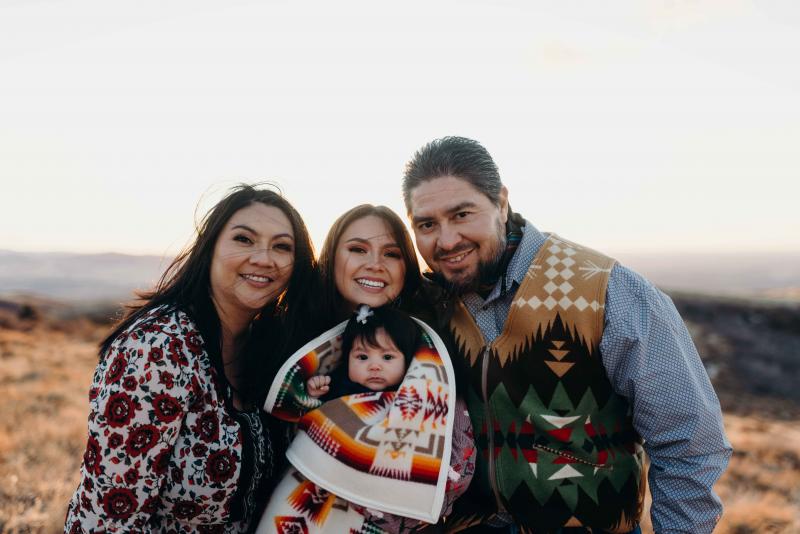
Photo of my family, daughters Lilianna Big Tree, Isla Rain, my husband, Dr. Cleve Davis and I. Photo was taken at Dosademmbi (White Rocks), near our home, by Brooke Richardson.
As a Newe (Shoshoni) who was raised on the Fort Hall Indian Reservation in southeast Idaho the land is very much a part of my upbringing and embedded in my daily life. I have witnessed change over the landscape of my reservation in ways I never imagined. Once clean rivers, and creeks of my youth are now polluted from phosphorus mining and intensive agriculture are simply run dry from mismanagement. The air is contaminated from wildfires that have increased in size and frequency and allergies seem to be worse from the spread of invasive weeds and high soil erosion from farming activities.
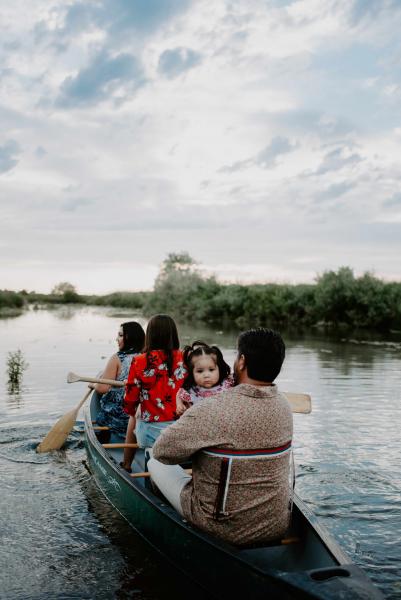
My family canoeing in a tributary to the Portneuf River.
As a Newe person, my first introduction to water, or baa as we Newe call it, was as a medicine. Baa is the first thing that you address in the morning. Drinking it and offering your morning prayer. Baa is at every family meal, prayed for, and before you eat, we even bless ourselves with baa. We were taught that it is our most sacred medicine and it always deserves the upmost respect. In fact, all plants and animals deserve deference, this includes those used as foods.
Growing up on the Reservation, I was accustomed to having mule deer meat as a common staple, however for the past 13 years, mule deer has been replaced by elk. The increase in elk and other animals on the Reservation, such as white-tailed deer and turkeys, is likely attributed to climate change and/or other anthropological changes. Elk though a traditional food, was a rarity of my youth, and my family did not have it often only because elk were not a common animal to our lands at that time. I could say the same for rabbit, which was also common, but now rarely seen. Mule deer is now considered a delicacy, as I have not had it in my freezer for at least a decade. If deer is offered at tribal gatherings or ceremonies, it is the first meat on my plate. What I am saying is, the landscape has not just changed for me, it has changed more so for my plant, fish, bird, insect, and animal relatives. As Newe people, we have close relationships with other forms of life, traditionally referring to ourselves according to the foods we eat. For example, on my maternal grandfather’s side, his family were called Agai Dekka’a, “Salmon Eaters”. Sadly, our people are now offered hatchery raised salmon and steelhead trout because the wild fish are going extinct, primarily due to dam obstruction, pollution of oceans, and warmer water temperatures associated with climate change. In other words, the Salmon are going extinct because we as humans are not taking care of the baa. During the 2019 salmon season, the Shoshone-Bannock Tribes were informed that only one salmon per tribal member could be caught, but even more depressing was the fact that many people were unsuccessful to fish for even that one. In essence, the quota for salmon are just “paper harvest limits” as it would be very difficult if not impossible to harvest the number of allocated fish because they simply are not there, not to mention the fact that maybe these fish are better left alone to spawn naturally. 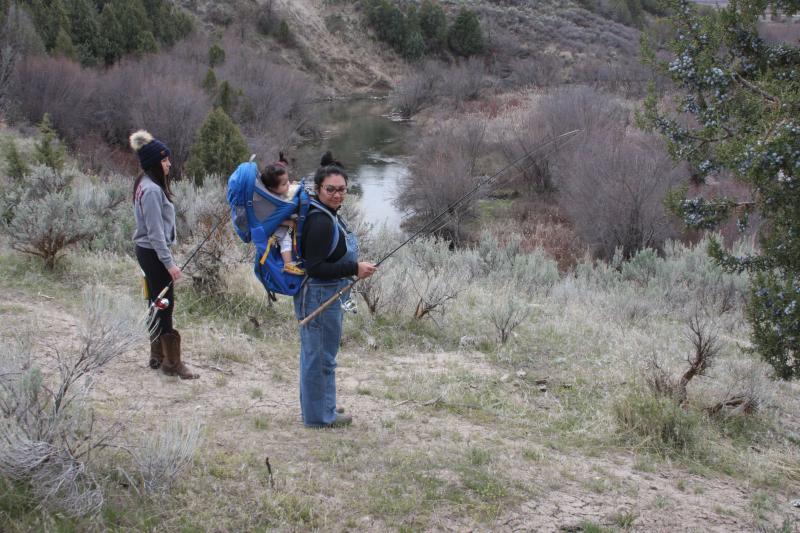
Family fishing near their home. Photo by Cleve Davis.
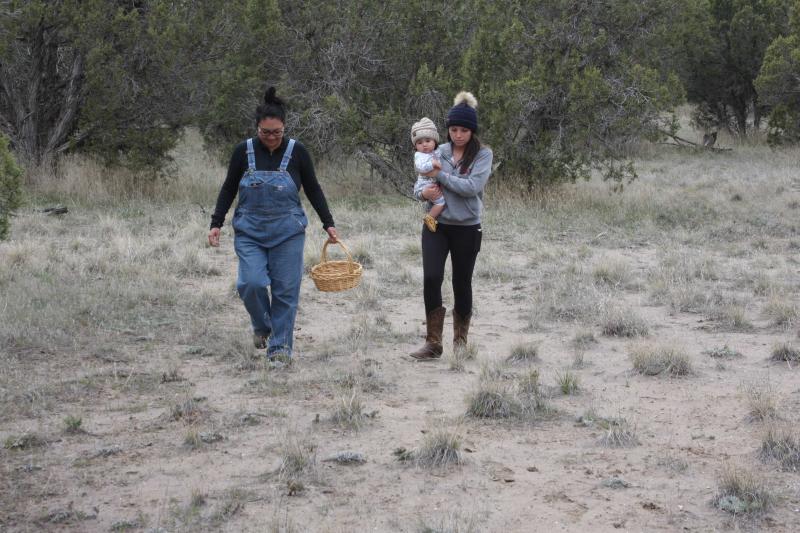
Me and my daughters out harvesting some local plant medicines on the reservation. Photo by Cleve Davis.
These are just some examples of medicine and food changes I’ve witnessed over my short life of 43 years. But what I have become more aware of in this period of quarantine, is that this may be a time for the renewal of Sogobia. Human observations have already shown a decrease in air and noise pollution, waterways are self-cleaning, an influx of our animal relatives are appearing, decreased carbon emissions from less traffic, and a decrease in land conversions due to a decline in the workforce. Overall, the quietness of the world is palpable. It is almost as if you can feel Sogobia healing, at least that is how things feel for me.

Me and my two daughters at home. Photo by author.
The ways of my ancestors are now being tested on me. Though I have always turned to the land for my medicines and foods, I am now having to think more critically about the idea of my historical reciprocity. Have I done enough for the land and water in my harvesting practices that I will have earned the right to continue to rely on these plant and energy beings going forward? In thinking beyond myself, how can I give back to the land what it has given to me over my entire life. Is the research that I am doing with Peyote conservation enough to show adequate respect to Sogobia and that I truly honor the gifts she has provided? By having an organic microfarm to reduce my family’s carbon footprint, is that enough? Is composting to produce a large portion of my foods enough? Is spreading native plant seeds enough? Is praying for the water and animals we harvest enough? How can I do more? After all, I only have control over myself.
As an example, many humans, myself included, have travelled the world for various purposes. This type of travel contributes to a carbon footprint and can potentially spread diseases such as COVID-19. This is not to say that travel is frowned upon, but we as scientists and researchers should think about our own carbon footprint or better yet how can we reduce our own carbon footprint. As we work from home and social distance ourselves, conferences and presentations have all been moved online. This platform may be part of our permanent future to help heal Sogobia.
As an Indigenous researcher who has spent many hours studying Federal Indian and natural resource law, I am fully aware of the injustices that have been and continue to be done to Native American people who have fought tirelessly for religious, land, and environmental rights and protections. What is also disturbing, is the fact that knowledge and words of Indigenous people are not fully incorporated in policy and law despite having nurtured a cultural relationship with the land since time immemorial. Our ancestors and non-human relatives have shared with us lifeways for survival and it behooves others to seek our perspectives and advice on these intimate relationships we have with our plants and animals. For many Indigenous researchers, we consider our research to be like ceremony. Our research becomes a part of us, like nature, we are not separate from it. According to Indigenous scholar, Shawn Wilson an Opaskwayak Cree has said, “we as Indigenous people have a ‘literally’ grounded sense of identity…the very nature of this relationship leads directly to our spirituality and sense of belonging…the relationships we form with our cosmos result in the spiritual nature of our existence and therefore our research as an extension of ourselves”. Due to my cultural teachings I try my best to implement them in my role as a mother, the research that I do, the foundation of our microfarm, and my interactions with Sogobia.
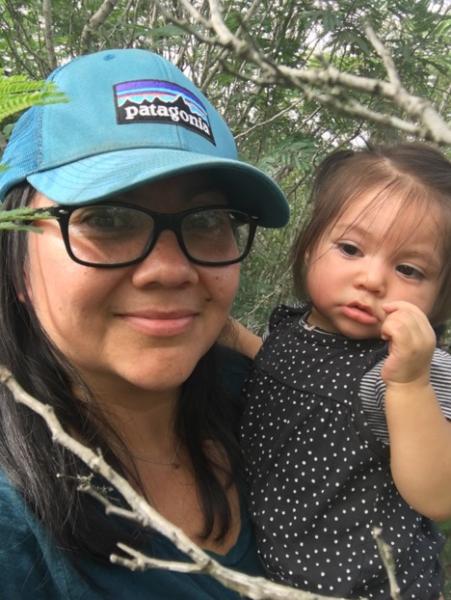
Me and my youngest Isla Rain searching for Peyote in the Peyote Gardens of south Texas. Photo by Author.
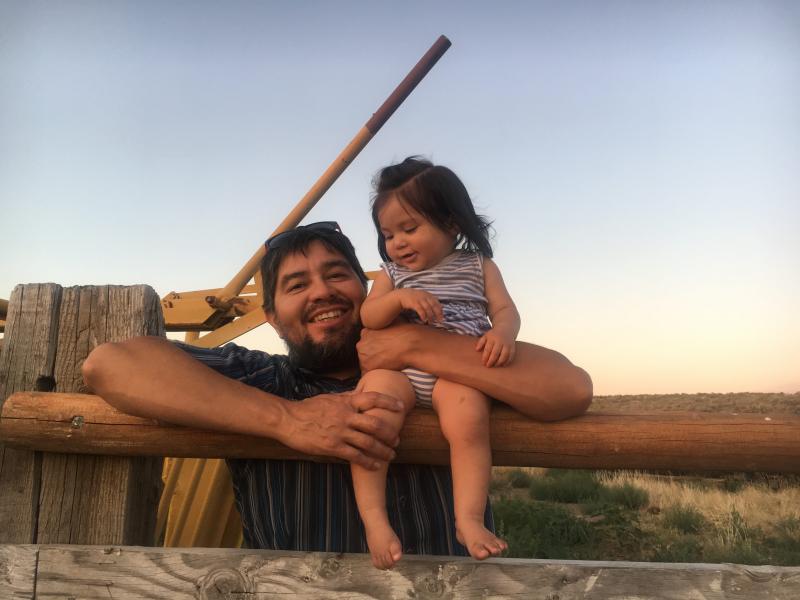
My husband and youngest taking a break from farming. Photo by author.
In this fast-paced world, it has taken a virus to slow us down. Some of us have begun to reflect on not only what we consider to be important, but on our personal impacts to the environment and how it relates to the spread of diseases, ecocide, and climate change. This is what I believe Peyote is also asking for. It needs time and space to regenerate, rejuvenate, grow, propagate, and to be free from further stress and human impacts. As I move forward in my work, I want to think that I used my time in quarantine to truly listen to what Sogobia has wordlessly tried to tell us and to perpetually ask for forgiveness and make the best attempt I can at reconciling my environmental accountabilities.


Comments (1)